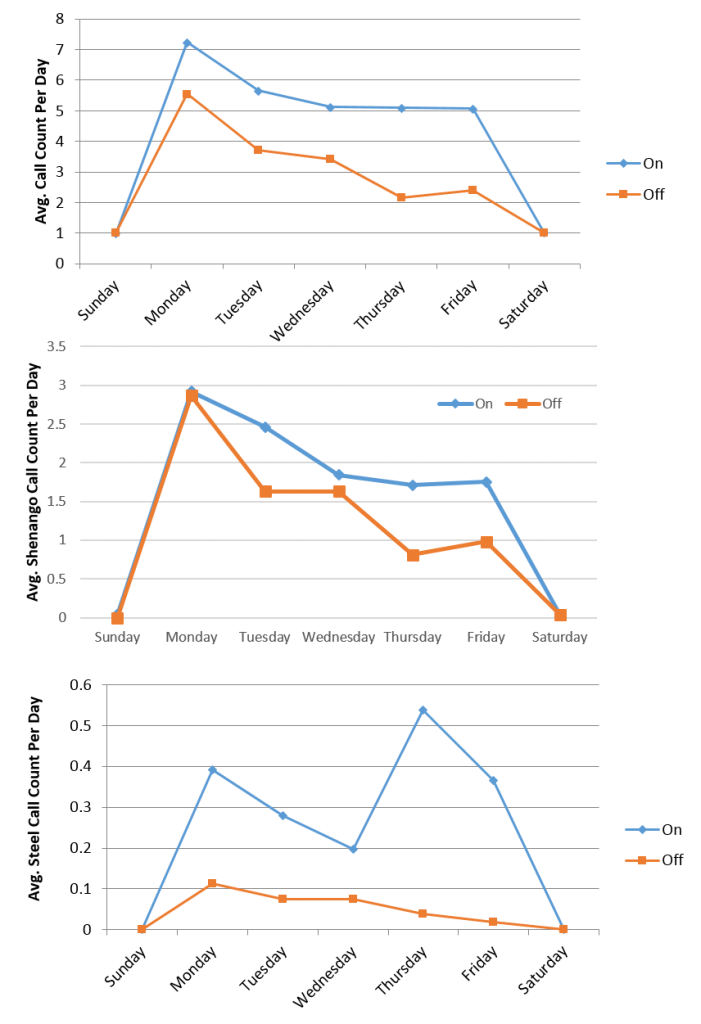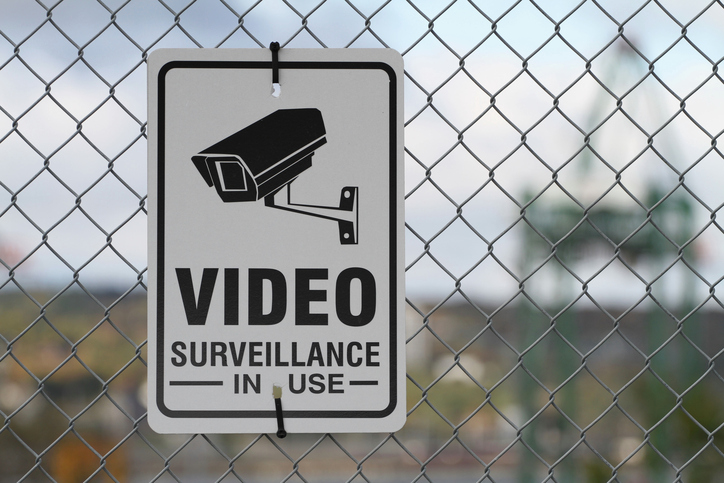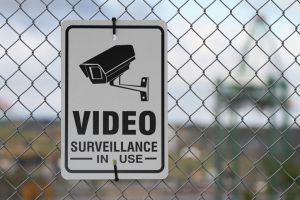Enforcing environmental regulations is controversial and can be costly. But researchers at UCLA and Carnegie Mellon have proposed a low-cost alternative for enforcement—disclosing emissions by live-streaming videos of pollution online—and here offer some preliminary evidence on how well it works.
Many nations rely on markets to allocate resources. Under certain conditions, markets do so efficiently. However, if production or consumption generates externalities, the market mechanism fails to efficiently distribute scarce resources. Perhaps the most intuitive example of externality is pollution; economic activity yields a residual (smoke, effluent) which travels downwind or downstream and affects third parties. Modern economies tend to manage externalities with environmental policies like standards, cap-and-trade, and emission taxes.
Regardless of its design, effective environmental policy hinges on monitoring and enforcement. However, gathering readings of either ambient levels of pollution or discharges by firms is costly. Because of this, large tracts of even modern economies, including the United States, are unmonitored. Compounding these inherent limitations to regulators’ efforts to surveil polluter behavior and to administer policy are proclamations that federal enforcement will become less rigorous (New York Times, 2017).
In this context, we propose an alternative approach to environmental policy: video surveillance of polluters with simultaneous transmission of the imagery on the Internet. This tack is relatively low-cost and it portrays pollution in a graphic, often emotionally evocative manner. Livestreaming images of emissions boils down to a means of disclosing risk to the public. Of course, environmental regulators do this already. However, when regulators periodically report pollution levels or announce risks to at-risk communities, they do so in a manner that is somewhat abstract. For example, the Environmental Protection Agency’s (EPA’s) air quality index conveys risk using a quantitative index coupled with color codes. In contrast, broadcasting live imagery of emissions provides a real-time perspective on pollution. It conveys the threat from pollution.
Research in economics and psychology suggests that people react to risk messaging cognitively and emotionally (Lowenstein and Mather, 1990; Lowenstein et al., 2001). The EPA’s approach targets cognitive message processing. Imagery of emissions broadcast on the Internet, on the other hand, is intended to stimulate emotional reactions.
Using information as a means to change behavior in the realm of environmental pollution is not a new idea. For example, large-scale public disclosure laws exist that require firms to report their emission levels. These include the Toxic Release Inventory and the Greenhouse Gas Reporting Program. One way such policies may effect change is to encourage concerned citizens to pressure regulatory agencies to enforce existing rules and laws. In addition, visual disclosure may provide environmental advocates and concerned communities with proof that firms circumvent regulatory standards. Finally, it may shame firms, inducing them to clean up their production processes.
|
Broadcasting live imagery of emissions provides a real-time perspective on pollution. It conveys the threat from pollution. |
Our study (Huet-Vaughn, Hsu, and Muller, 2018) focuses on a coke plant located just west of Pittsburgh, Pennsylvania: the Shenango Coke Works. (The mill closed in January 2016.) The mill produced coke, which is purified coal, by essentially baking out various impurities. This site had a long history of violating air pollution standards. Because of this, Shenango received considerable attention in the local media and drew the ire of nearby residents (Pittsburgh Post-Gazette, 2015a). In November 2014, a robotic camera was installed to track pollution releases from the plant (Pittsburgh Post-Gazette, 2015b).
Our study depends on several data sources. The camera imagery and data was provided by the CREATE Lab at Carnegie Mellon University (Hsu et al., 2017). Information on phone calls from citizens concerned about pollution was provided by the Allegheny County Health Department (ACHD), the regulator of air quality in the Pittsburgh Metropolitan Area. We also control for a battery of meteorological conditions provided by the National Oceanic and Atmospheric Administration, and ambient pollution readings reported by the EPA.
We begin our empirical analysis by testing whether the camera’s digitized readings of emissions are correlated with fine particulate matter (PM2.5) levels at a nearby pollution monitoring station. That is, we ask: does the imagery gathered by the camera convey information about actual ambient pollution levels? The evidence that the data gathered by the camera and the monitor are associated is most conclusive when controlling for wind direction and time: one-hour lagged values of the data from the camera are significantly associated with PM2.5 levels at the ambient pollution monitoring station conditional on wind direction. This is an intuitive result. Emissions from the facility only affect ambient readings at the monitoring station when the wind blows toward it. And the use of a lagged measure of pollution captures the disparity between the “live” smoke imagery and the subsequent delay until emissions reach the monitoring station.
The remaining empirical analyses explore whether the camera induced people to call the ACHD. First, we test whether all calls related to air pollution were higher after installation of the camera. In fact, we do detect evidence of an association between the daily count of all calls pertaining to air pollution in the ACHD’s database and the presence of the camera. In our simplest model, there was one more call every two days that the camera was on, relative to the period prior to when the camera was active. In a more nuanced test, we find evidence that calls were particularly elevated during certain days of the week. For example, on Mondays after the camera was active, we report an increase of 0.3 calls per day relative to the count of calls on weekend days. More strikingly, on other weekdays, we report evidence that the camera produces an increase twice as large relative to weekend days. The top panel of Figure 1 depicts these effects.

(Source: Huet-Vaughn, Hsu, Muller, 2018.)
Again referencing the literature in psychology and behavioral economics, a factor that drives how individuals react to information is prior knowledge about the subject matter (Averbeck, Jones, and Robertson, 2011). If an intervention conveys threat information that for some subjects is not known, the emotional effect tends to be more acute than if the information merely reinforces what subjects already know. Our research tests whether the prior knowledge hypothesis explains citizens’ response to the camera in the following way. We estimate a separate model restricting the sample to only those calls that mention, or are about, Shenango, the monitored facility. And, in a subsequent exercise, we examine complaints about non-Shenango related topics.
This dimension of our empirical work suggests that the camera had no effect on daily Shenango-related call counts per se. Though the second panel of Figure 1 appears to show an increase, the differences are so variable that our statistical tests fail to reject equal average call counts through the week. Further support of the prior knowledge hypothesis lies in the fact that the vast majority of calls about Shenango come from callers in the same ZIP code as the mill. They are already exposed to the mill, to its smells, to the sight of its emissions. Therefore, the camera does not inform their sense of risk from the mill. These communities have copious prior knowledge about Shenango.
Did the camera have no effect on Shenango at all? The mill was located under one-half mile south-southwest from the nearest stationary air pollution monitor. One way to test if operators of the plant systematically changed emission rates after the camera was installed is to examine whether ambient PM2.5 levels at the monitor changed. To refine this test, we limit this analysis to those hours during which the wind blew from the mill toward the monitor. We then compare the hourly PM2.5 readings before and after the camera was activated. The primary smokestack at the mills lies 210 degrees from the monitor. If we confine the test to only observations during which the wind was blowing from 210 degrees plus or minus just 5 degrees (so from 215 degrees to 205 degrees), ambient pollution levels were 20 percent lower after the camera was installed. This difference is statistically significant at conventional levels. It appears emission rates were lower with the camera on than in the pre-test period.
|
What we propose is a low-cost, emotionally charged means to convey risk information to citizens affected by, or concerned about, pollution exposure. |
What effect did the camera have on people with less prior knowledge about Shenango’s emissions? To probe this question, we test whether the camera changed people’s propensity to call the ACHD about other (non-Shenango) pollution sources. We target complaints about steel manufacturing facilities, another category of major point sources of air pollution in Allegheny County. Importantly, these calls overwhelmingly originate from ZIP codes other than that encompassing Shenango. We find that the camera was associated with an increase of one call per day on Mondays, relative to weekend days, specifically about steel mills. Even more conspicuous is the three-call (for every two days) increase on weekdays other than Monday after the camera was turned on. This dramatic change is evident in the bottom panel of Figure 1.
If video surveillance is truly viable as a means to provide risk information to citizens, then this effect must persist. In light of this we ask: was this shock to behavior fleeting or enduring? While our conclusions in this respect are necessarily limited, our work does report that the Shenango closure announcement did not affect the call counts targeting steel mills. This is consistent with the view that while they were motivated by the Shenango-based pollution livestream, citizens affected by the similar but unrelated steel mill pollution were not deterred from their own civic participation in the form of regulator complaints by news of Shenango’s demise.
Our study is motivated by the incompleteness in regulators’ traditional efforts to monitor firm behavior and enforce existing laws. Further, leadership of federal environmental agencies has backed off their enforcement duties. What we propose is a low-cost, emotionally charged means to convey risk information to citizens affected by, or concerned about, pollution exposure. What we find provides evidence that video surveillance effects change in two ways. It induced a broad increase in awareness or concern about air pollution risk by increasing calls to the ACHD, the local air quality regulator, about pollution from other sources. The camera also appears to have provided a nudge to plant operators to reduce their measurable emissions. In summary, we propose this new approach to environmental monitoring and enforcement as an important and effective complement to traditional management of pollution.
References
Averbeck, J; Jones, A.; Robertson, K. (2011). “Prior Knowledge and Health Messages: An Examination of Affect as Heuristics and Information as Systematic Processing for Fear Appeals”. Southern Communication Journal. 76 (1): 35–54. doi:10.1080/10417940902951824.
Hsu, Yen-Chia, Paul Dille, Jennifer Cross, Beatrice Dias, Randy Sargent, and Illah Nourbakhsh. 2017. Community-Empowered Air Quality Monitoring System. In Proceedings of the 2017 CHI Conference on Human Factors in Computing Systems (CHI 2017). ACM.
Huet-Vaughn, E., Yen Chia Hsu, N. Z. Muller. 2018. “Livestreaming Pollution: A New Form of Public Disclosure and a Catalyst for Citizen Engagement?” NBER Working Paper #24664.
Loewenstein, G., J. Mather. 1990. “Dynamic Processes in Risk Perception.” Journal of Risk and Uncertainty. 3:155 – 175.
Loewenstein, G., C.K. Hsee, E.U. Weber, N. Welch. 2001. “Risk as Feelings.” Psychological Bulletin. 127(2): 267 – 286.
New York Times. 2017. https://www.nytimes.com/2017/02/05/us/politics/scott-pruitt-is-seen-cutting-the-epa-with-a-scalpel-not-a-cleaver.html?mcubz=0&_r=0
Pittsburgh Post-Gazette, 2015a: http://www.post-gazette.com/opinion/2015/12/01/It-s-time-to-clean-up-DTE-s-Shenango-plant/stories/201512010011
Pittsburgh Post-Gazette, 2015b: http://www.post-gazette.com/news/environment/2015/11/19/Regulators-reviewing-Shenango-Coke-Works-compliance-with-2012-consent-decree/stories/201511190230
Emiliano Huet-Vaughn is an economist at UCLA School of Public Affairs.
Nicholas Z. Muller is the Lester and Judith Lave Associate Professor of Economics, Engineering and Public Policy at the Tepper School of Business at Carnegie Mellon University and a Research Associate at NBER.
Yen-Chia Hsu is a PhD candidate at the Robotics Institute at Carnegie Mellon University.
Disclaimer: The ProMarket blog is dedicated to discussing how competition tends to be subverted by special interests. The posts represent the opinions of their writers, not necessarily those of the University of Chicago, the Booth School of Business, or its faculty. For more information, please visit ProMarket Blog Policy.







